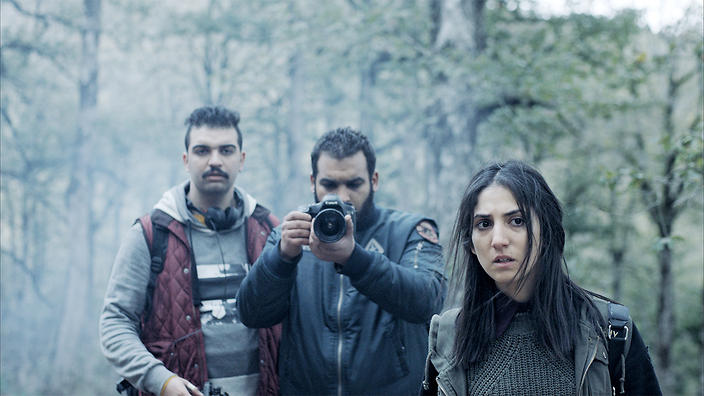On June 6, Netflix began streaming Tunisian cinema’s first horror movie, “Dachra.” The film’s move to Netflix follows a highly successful cinematic release in Tunisia where the movie smashed box-office records.
Originally released in 2018, “Dachra” follows three journalism students seeking to unravel the 20-year mystery of a woman found partially mutilated and later committed to a psychiatric facility. As the students attempt to verify claims the woman is a witch, they are drawn into a reclusive community in the woods.
The story mixes North African folklore, including the existence of Zouhri children whose blood is believed to release hidden treasures guarded by “djinns,” with heartstopping suspense and craftful filmmaking. It is the first feature film from actor, producer, and director Abdelhamid Bouchnak.
Embracing genre to tell Arab stories
“Dachra” is just one of a growing number of films from the MENA region to embrace the use of genre cinema, part of an emerging trend.
Genre is a broad term that denotes films which utilize common themes or narratives such as thrillers, comedies, or science fiction. The term is increasingly used for fantasy and horror films as well.
The growing recognition of, and interest in Arab genre cinema by international festivals and audiences alike is shattering stereotypes of what viewers can expect from Arab cinema. The use of genres by Arab filmmakers is not new, but has typically been overlooked by international audiences in the past.
Foreign audiences have preferred Arab content in the form of social realism and hybrid documentaries. These productions, often rich in imagery of misery and destruction, promulgate the idea of a one-dimensional war-torn and problem-riddled Middle East.
The use of genre in film, and in particular horror and fantasy, follow the trend of dystopian imagery that has emerged as a key component in contemporary Arab literature and art in the 21st century. With an increasing number of translations available, as well as original works in French and English, Arab authors have crafted a unique Arab dystopian genre.
Constructed from Arab experiences, the genre deviates from its Western counterpart in a number of fundamental ways. Most notably, power structures used to repress find their basis in religion or bureaucracy rather than left or right political ideologies.
Filmmakers also draw on local influences and histories when shaping characters and storylines in horror. In “Dachra,” Bouchnak invokes the practice of ritualistic sacrifice, as it is conceived in North Africa, to craft a story distinct from its Western counterparts.
Streaming increasing demand for Arab stories
“Dachra” follows the move of the 2017 Tunisian film “La Belle et la Muete” (The Beauty and the Dog) onto Netflix, with the streaming platform continuing to increase engagement with content from the MENA region.
Georges Schoucair of Abbout Productions in Lebanon credits the streaming giant with increasing demand for Arab genre content and “introducing audiences to non-English language films from the region.”
In May, Netflix announced an agreement with the Tunisian-Egyptian actress and producer Hend Sabry for an original Arabic-language series to be filmed in Egypt. The comedy-drama will be female-centred and is expected to be released in 2021.
From June 11, the Saudi Arabian series “Whispers,” a dramatic-thriller, will be available to Netflix’s 183 million subscribers in 190 countries and 20 languages.





